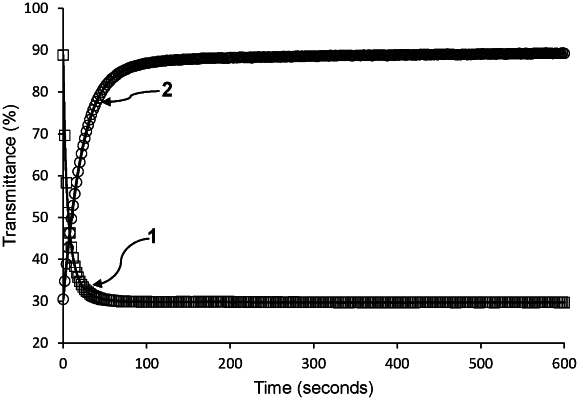| CPC B29D 11/00653 (2013.01) [B29D 11/00076 (2013.01); B29D 11/00134 (2013.01); C08F 230/08 (2013.01); G02C 7/04 (2013.01); G02C 7/102 (2013.01); B29K 2033/26 (2013.01); B29K 2083/00 (2013.01); B29K 2105/0002 (2013.01); B29K 2105/0061 (2013.01); B29K 2823/10 (2013.01); B29K 2995/0046 (2013.01); B29K 2995/0065 (2013.01)] | 18 Claims |

|
1. A method for producing silicone hydrogel photochromic contact lenses, comprising the steps of:
(1) providing a mold for making a contact lens, wherein the mold has a first mold half with a first molding surface defining the anterior surface of a contact lens and a second mold half with a second molding surface defining the posterior surface of the contact lens, wherein said first and second mold halves are configured to receive each other such that a cavity is formed between said first and second molding surfaces;
(2) introducing a polymerizable composition into the cavity, wherein the polymerizable composition comprises
(a) at least one hydrophilic (meth)acrylamido monomer,
(b) at least one siloxane-containing (meth)acrylamido monomer,
(c) at least one polysiloxane vinylic crosslinker, wherein all ethyleneically unsaturated groups of said at least one polysiloxane vinylic crosslinker are (meth)acrylamido groups, (meth)acryloxy groups, vinyloxycarbonyl-amino groups, vinyloxycarbonyloxy groups, or combinations thereof,
(d) at least one photochromic compound,
(e) at least one thermal free radical initiator having a 10-hour half-life temperature (designated as T10hλ) of from about 50° C. to about 90° C., and
(f) from about 4% to about 20% by weight of an organic solvent relative to the total weight of the polymerizable composition,
wherein the sum of the amounts of components (a) to (c) is at least 90% by weight relative to total amount of all polymerizable components in the polymerizable composition;
(3) curing thermally the polymerizable composition in the lens mold in an oven to form an unprocessed photochromic silicone hydrogel lens precursor, wherein the step of curing thermally comprises
(a) maintaining a first curing temperature of from about (T10hλ−20°) C. to about T10hλ° C. for a first curing time,
(b) maintaining a second curing temperature of from about (T10hλ+10°) C. to about (T10hλ+35)° C. for a second curing time, and
(c) optionally maintaining a third curing temperature of about 100° C. for a third curing time; and
(4) subjecting the unprocessed photochromic silicone hydrogel lens precursor to one or more post-molding processes selected from the group consisting of extraction, surface treatment, hydration, packaging, sterilization, and combinations thereof, to form a photochromic silicone hydrogel contact lens.
|